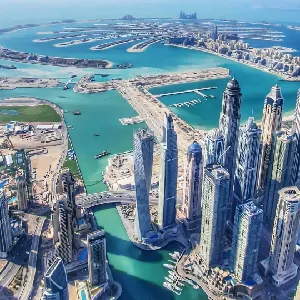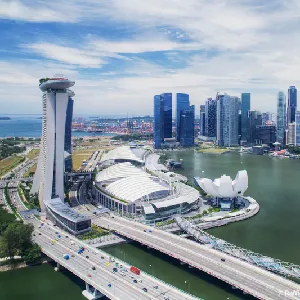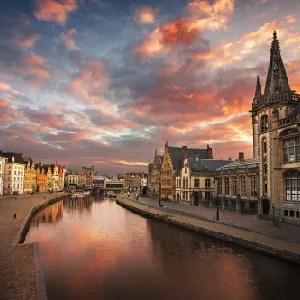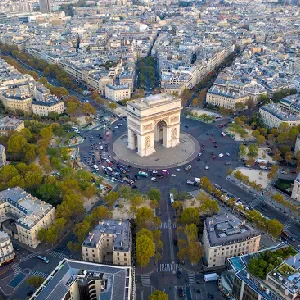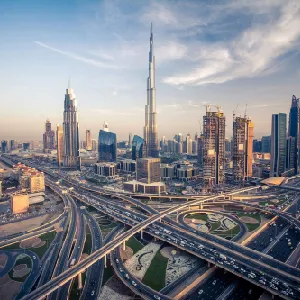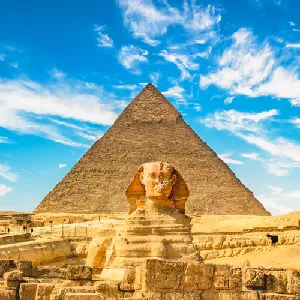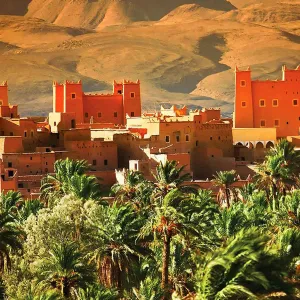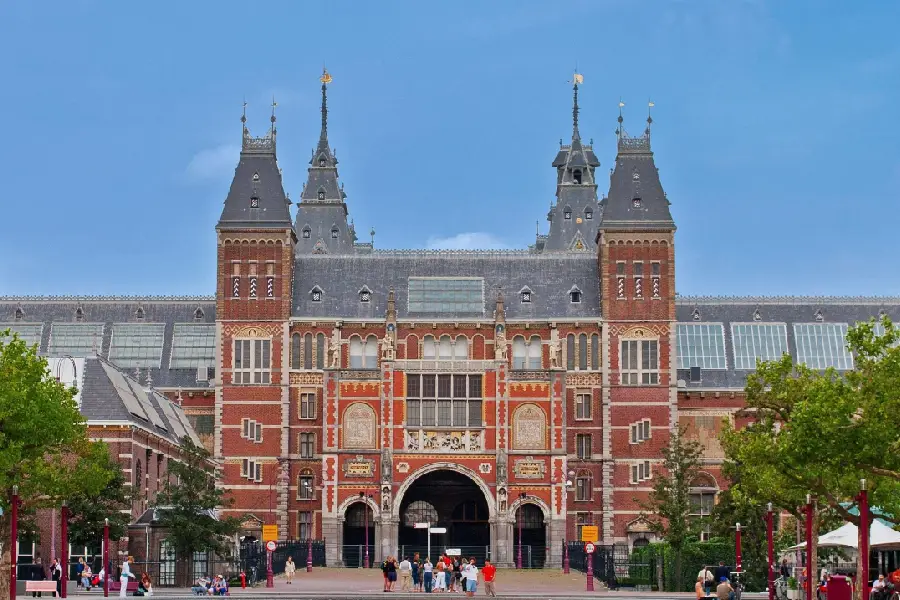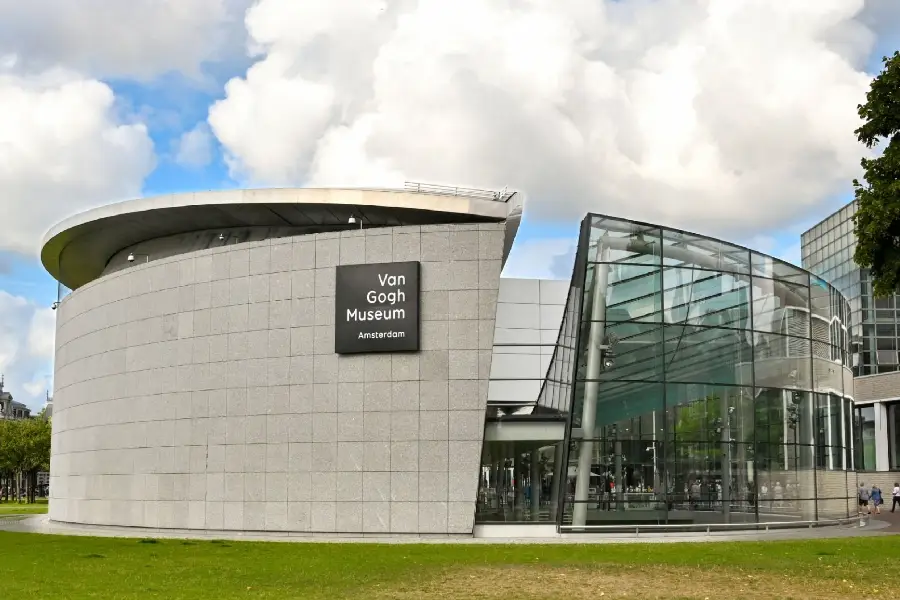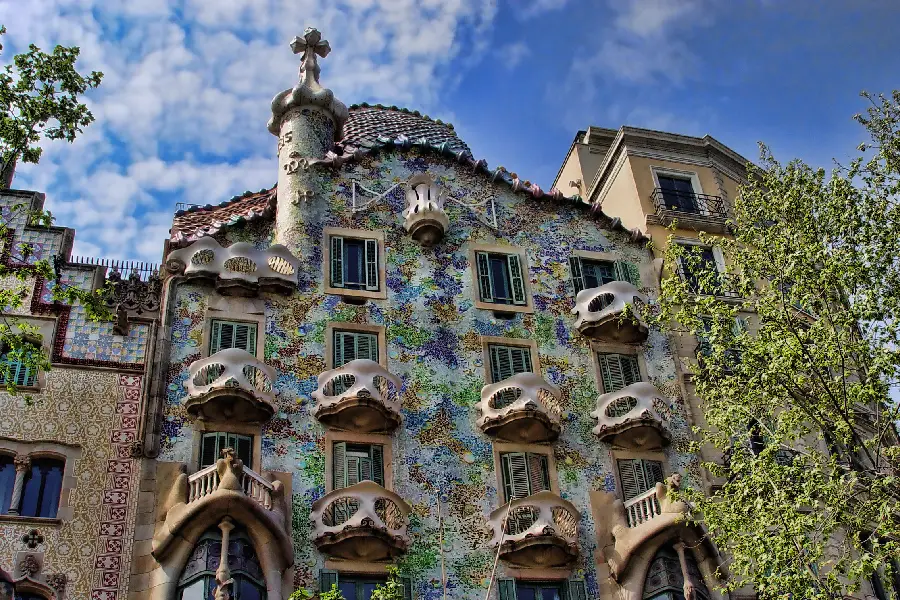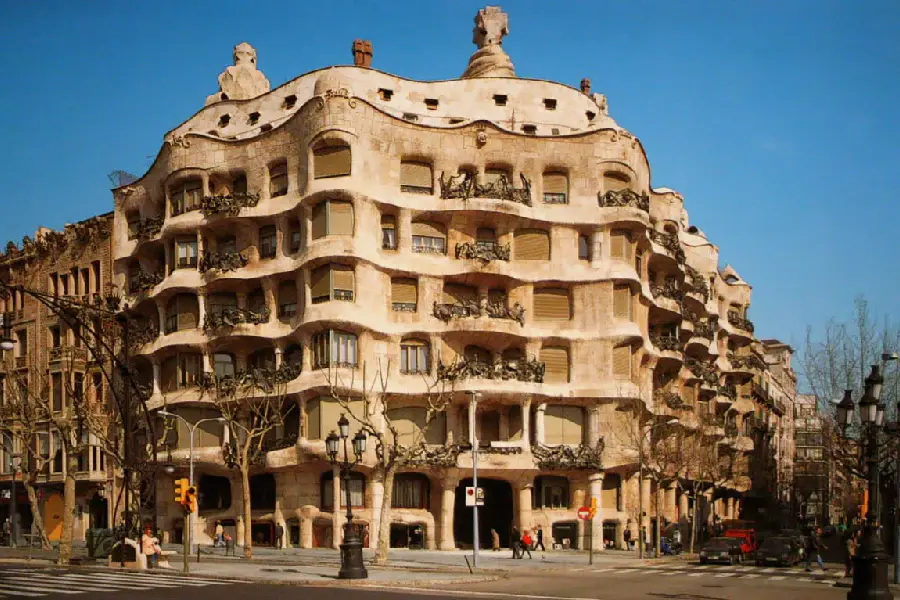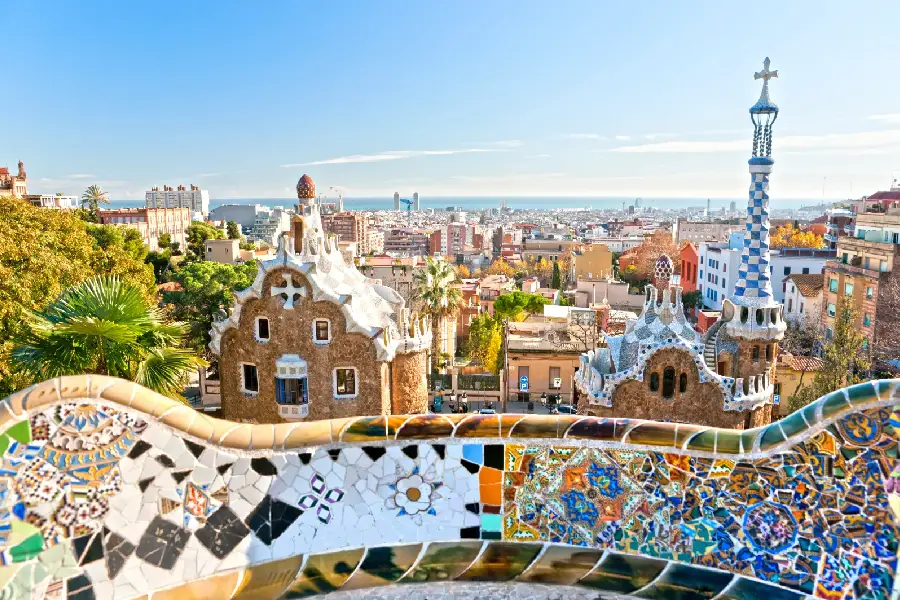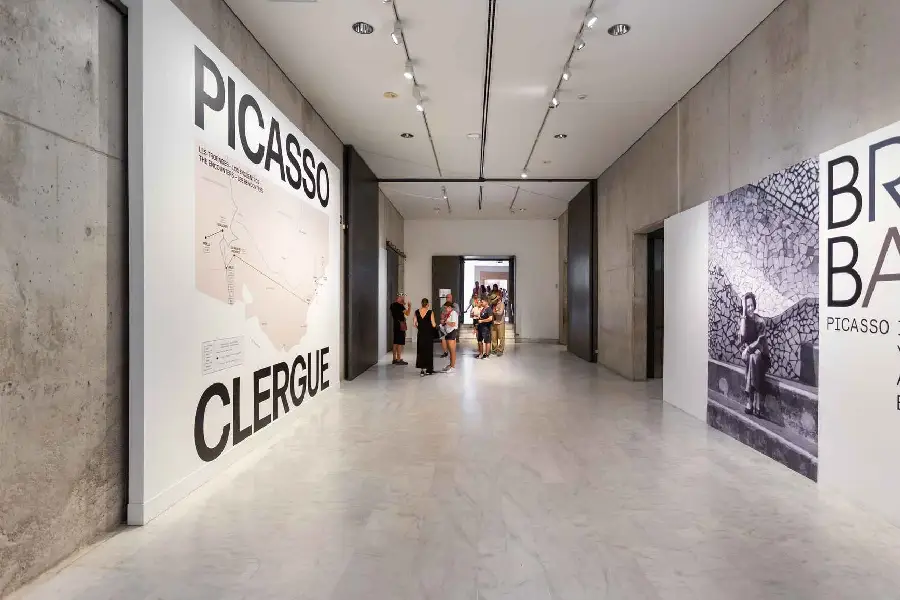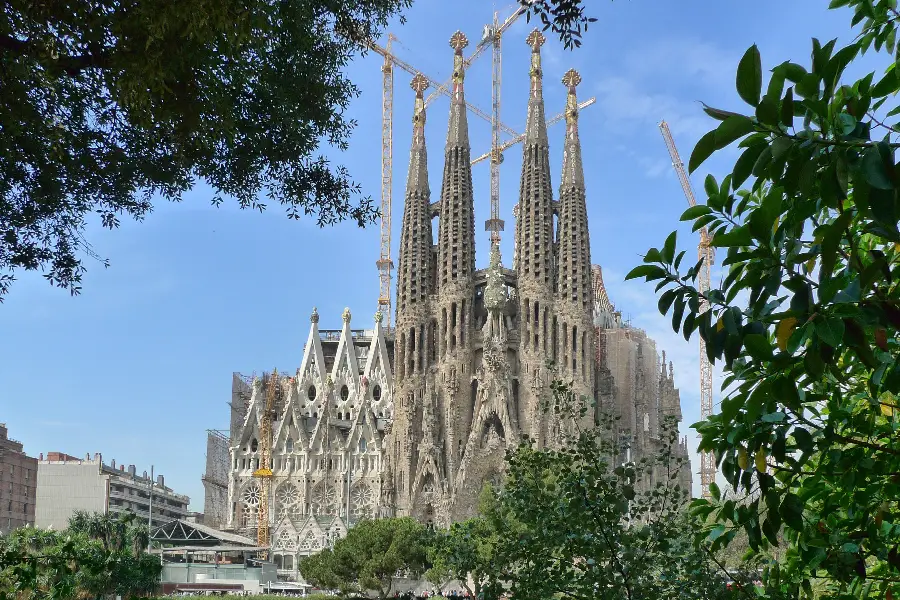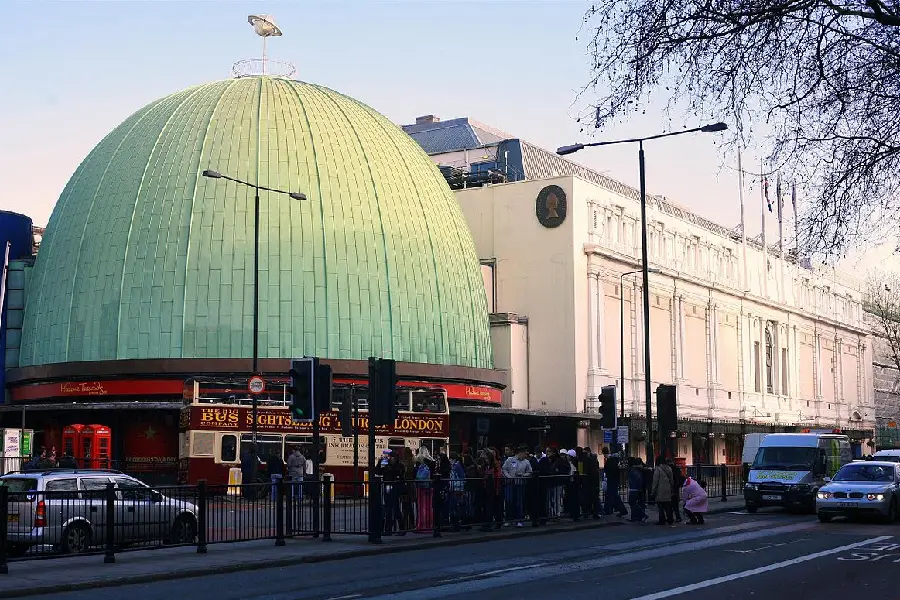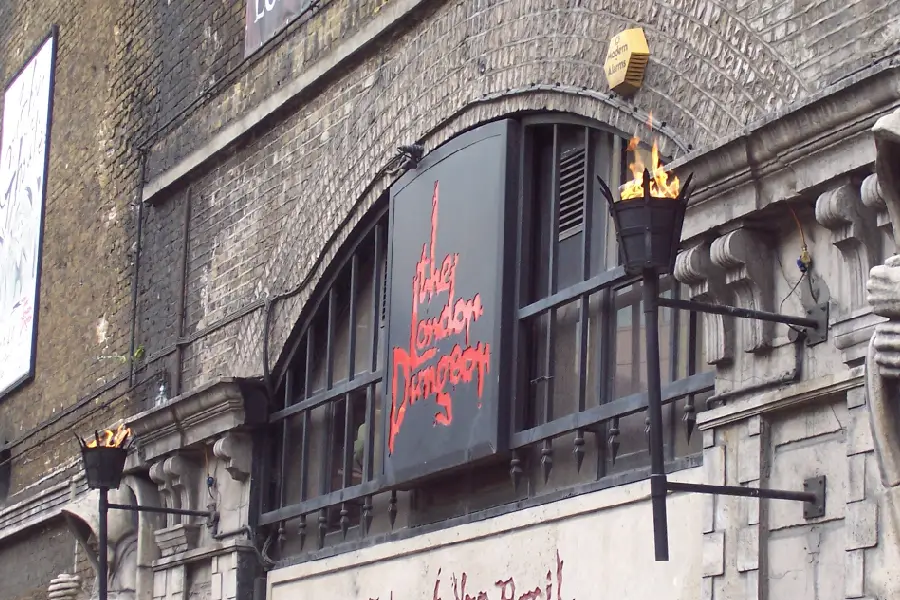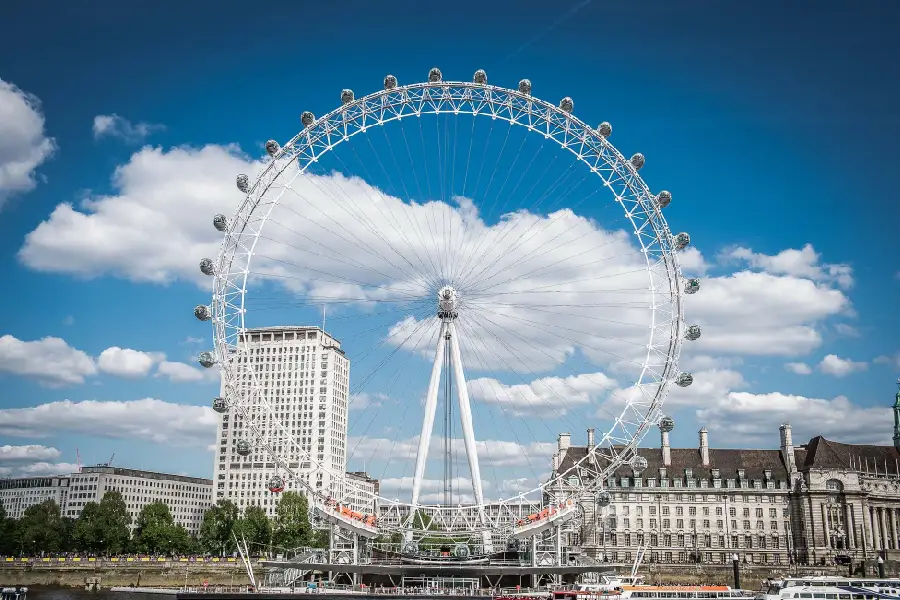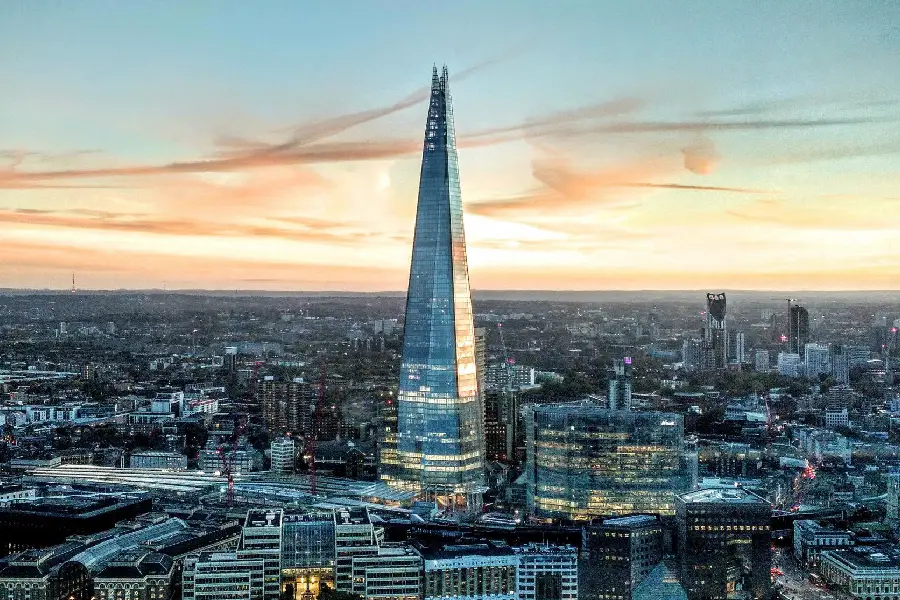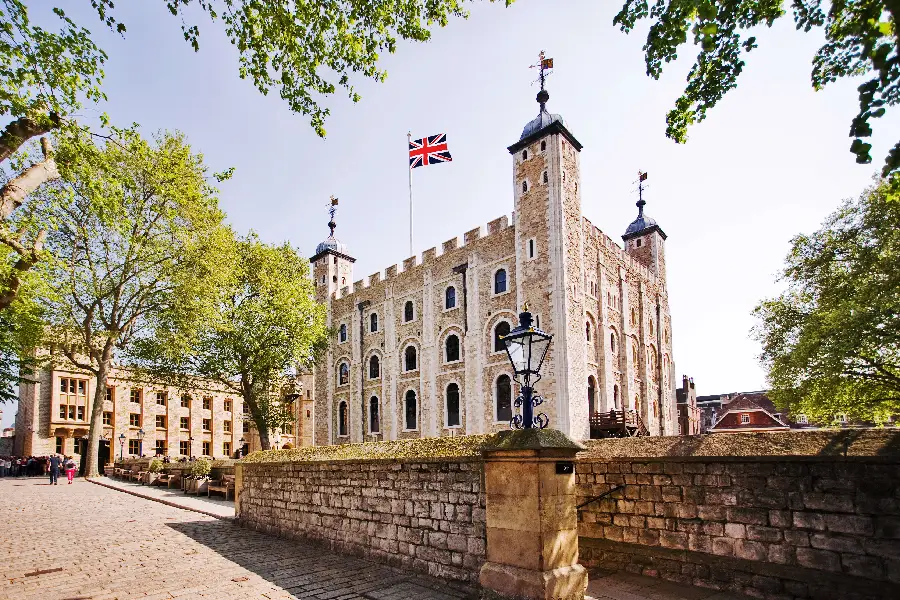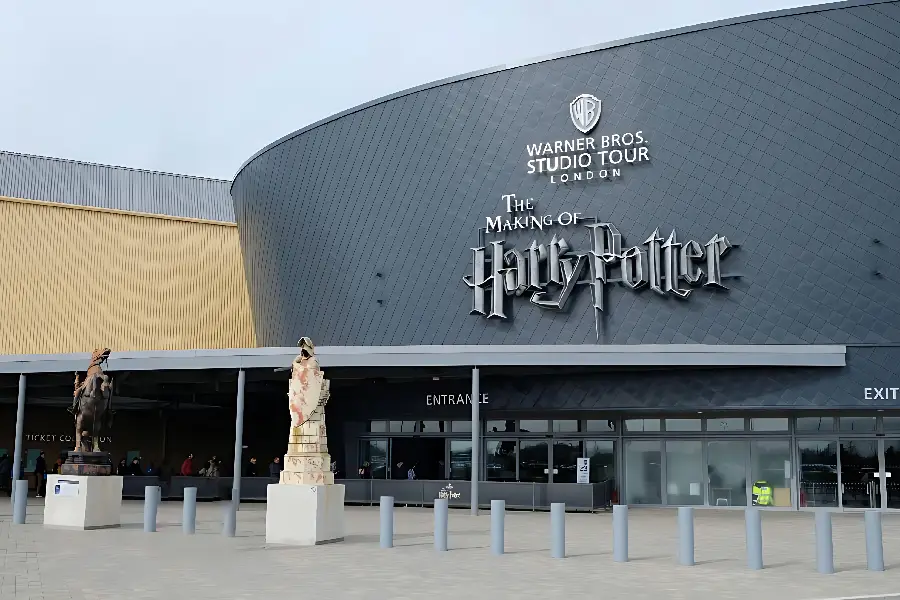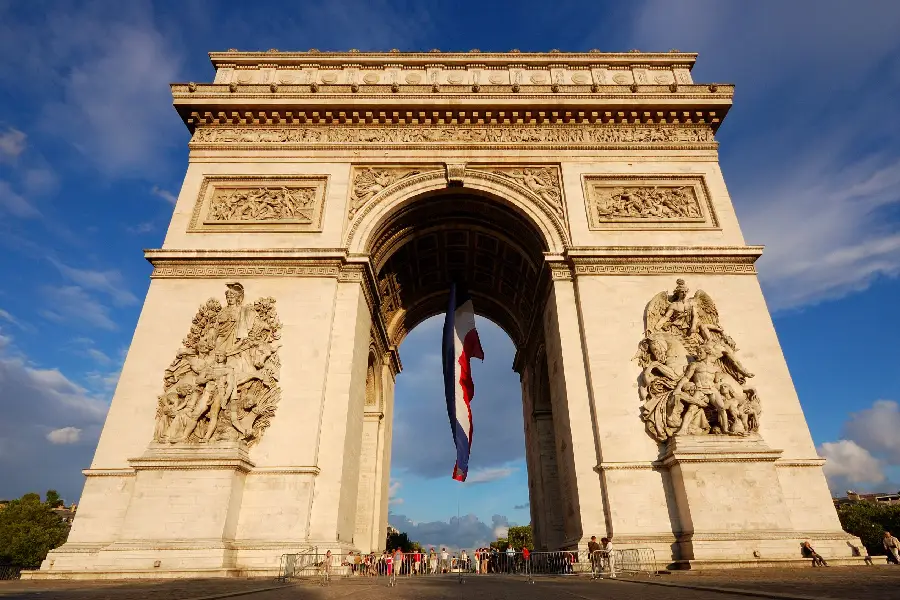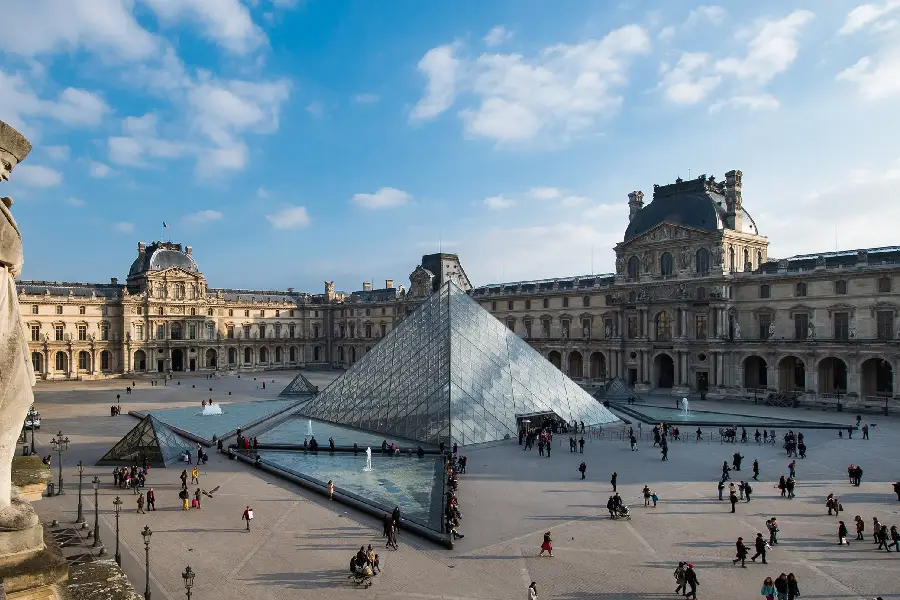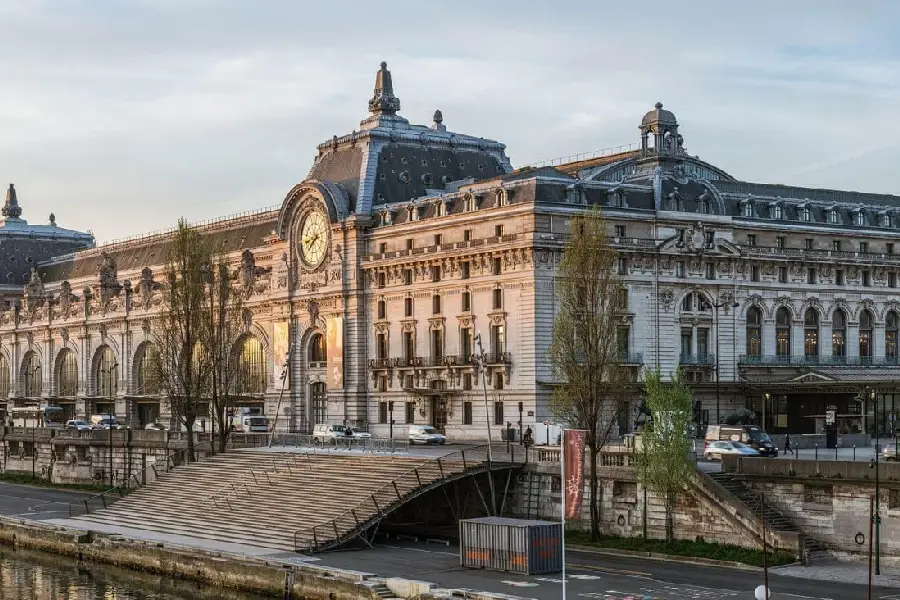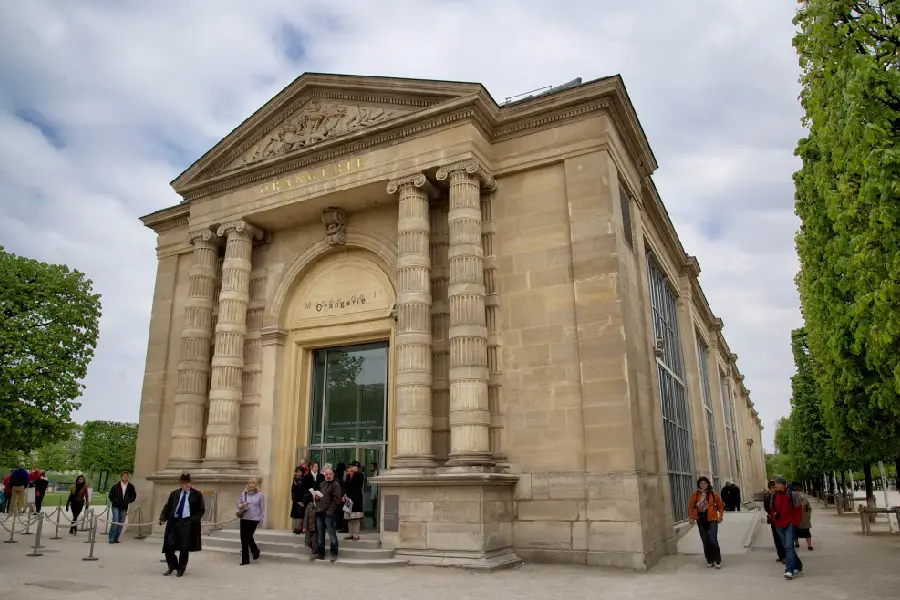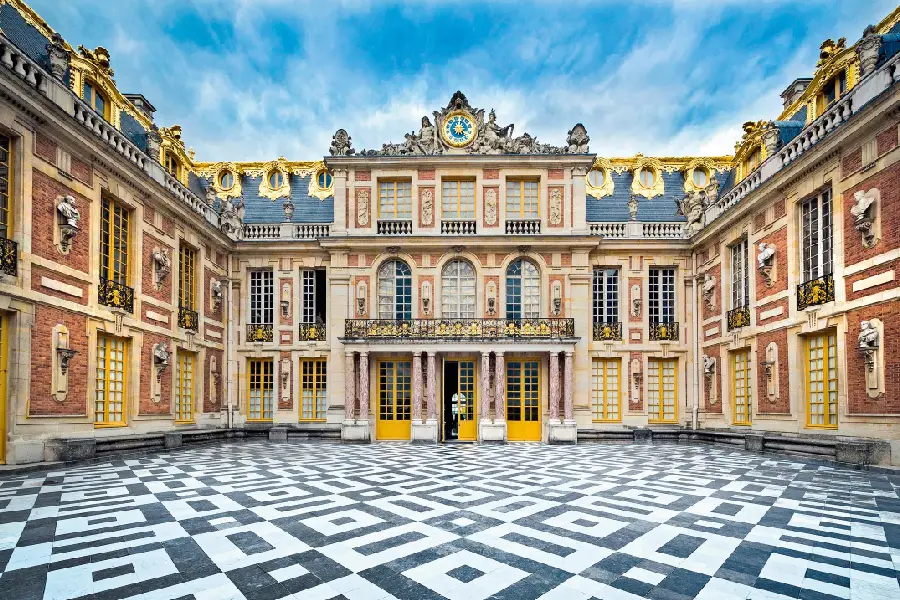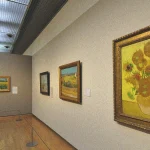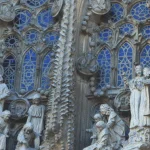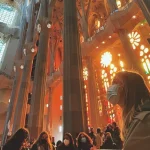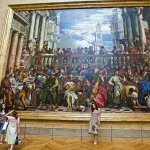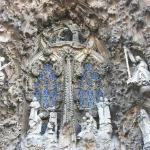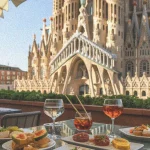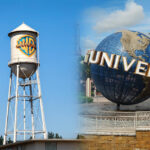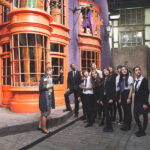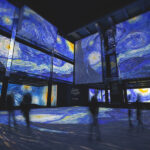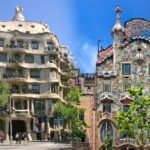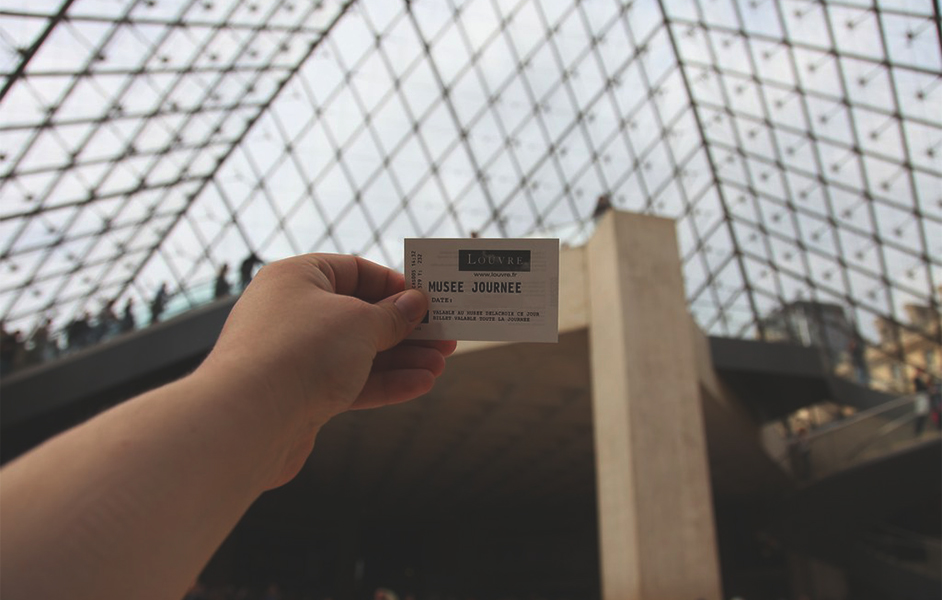Do you know that annually the Louvre in Paris, France, attracts more than 9.6 million visitors, which makes it one of the most visited museums in the world? From ancient relics down to iconic artistic pieces, these museums offer glimpses into history and culture that have never been seen before. With interactive displays as well as celebrated masterpieces, these cultural centres are able to provide an all-around experience for art lovers and those passionate about historical events.
From the Metropolitan Museum of Art in New York City to Vatican Museums located in Vatican City State, these establishments encapsulate human genius and inheritance at its best. Please join us on this intriguing journey through time and artistry, visiting top museums that draw millions upon millions of people every year.
Table of Contents
Key Takeaways
- Consider Diverse Criteria: When evaluating museums, take into account various factors beyond just visitor numbers to appreciate the full scope of their impact.
- Explore Top Museums: Delve into the list of the most visited museums in 2023 to discover popular cultural destinations around the world.
- Appreciate Unique Features: Recognize the distinct characteristics and offerings that set each museum apart and make them appealing to visitors.
- Understand Historical Significance: Gain insight into how museums preserve and showcase history, contributing to the collective cultural heritage of humanity.
- Acknowledge Cultural Impact: Reflect on the global influence museums have in promoting cultural understanding and appreciation worldwide.
- Enhance Visitor Experience: Implement strategies from notable exhibitions to improve the overall experience for museum visitors and create lasting memories.
Criteria for Ranking Museums

Attendance Numbers
The total number of people who attend a museum is what determines its global ranking. Museums with the highest numbers of visitors are generally regarded as being more popular and significant. The museum is therefore very appealing to a wide range of people in terms of the number of times it was visited.
It may be argued that museums that have millions visiting them annually are likely to be recognized for their cultural impact and relevance, such as the Louvre in Paris, which is consistently ranked among the top worldwide based on its astounding yearly visitor numbers. And this shows how popularity can raise a museum’s place in global competition.
A crucial factor in rating a museum is its ability to attract visitors’ interest through personal engagement and unique experience. Interaction with exhibits, guided tours, and educational programs considerably improves visitor’s experience, making it memorable and impactful. A focus on engaging guests makes museums rank higher because they attract many people.
Cultural Significance
Another critical factor that helps in rating the world’s museums is the cultural importance of a museum. Often, they are categorized as important assets for the preservation of culture since they harbour rare artefacts, priceless artworks, and pieces with historical significance. They get recognized globally due to their dedication to promoting inclusivity and various cultures.
Culturally vibrant cities or regions attract more attention from both residents and tourists, who are significantly attracted to museums located there. For example, London’s British Museum has an extensive collection that spans numerous civilizations and centuries hence highlighting the immense human history diversity. These types of museums contribute greatly to enhancing cultural comprehension and goodwill.
Museums get ranked high if they have iconic masterpieces or even artefacts that are historically exceptional. Vatican Museums, for instance, which house Michelangelo’s Sistine Chapel ceiling, have a lot of global historical value attracting people all over the globe. The conservation of these objects evidences how important it is to understand history when gauging a museum’s worth.
Historical Value and Unique Features
Apart from cultural significance, an arrangement of a museum’s historical worth, as well as its defining traits, is also vital when it comes to its ranking. Museums situated in architecturally significant buildings or those that have unique design features usually stand out among their peers. The Guggenheim Museum Bilbao, which has avant-garde architecture designed by Frank Gehry, shows how unconventional structures can improve the attraction of a museum.
Also, within the global museum context, museums concentrating on niche subjects or particular themes may be distinctive. They cater to art lovers who want to delve into contemporary artistic movements at New York City’s Museum of Modern Art (MoMA), for example. By having specialized collections and exhibitions in place, these institutions assert themselves as front-runners in their areas of interest.
Additionally, some museums distinctively embrace new technology and multimedia experiences than others. Beyond conventional trips to the museum, virtual reality exhibits, interactive displays, and digital archives give visitors an experience beyond traditional learning ordeal. Therefore, through implementing innovative technologies, museums stay relevant and attract contemporary audiences looking for vibrant cultural encounters.
Visitor Numbers Overview

Post-Pandemic Surge
There has been a significant increase in visitors to museums across the globe after the pandemic. Cultural institutions have experienced a surge of attendance in the lives of people who are willing to explore them. This boost in museum visitors is driven by an urge for person-to-person experiences over a period of lockdown.
A move towards greater outdoor activities and cultural events has been instrumental in attracting higher numbers of people to museums worldwide. This trend is reflected in attendance figures that indicate a marked rise in the number of persons who visited leading museums post-COVID-19. Museum goers desire enriching experiences and educational opportunities contributing to this growth.
Despite challenges faced by tourism due to COVID-19, museums have become major attractions for both local residents and international tourists. Museums around the world are seeing more footfall as people’s interest in cultural heritage and artistic expression has risen again.
Comparison of 2022 and 2023 Figures
It was interesting to analyze the attendance figures of global leading museums between 2022 and 2023. During this period, while some museums steadily gained more visitors, others had a huge increase in attendance. These ups and downs have been largely influenced by factors such as special exhibitions, cultural events, and marketing strategies.
Museum going is a fluid affair, as demonstrated by comparing visit numbers across years. Museums that quickly adapted to changing tastes among their guests and introduced innovative programming were better attended. This information helps museums keep engaging visitors and improving their overall visitor experience.
In 2023, several major museums broke their all-time attendance records with some never-before-trends in cultural institution flexibility toward changing visitors’ needs. The ability to offer various programs, interactive exhibits and engaging activities has therefore contributed significantly to attracting a wider audience demographic group.
Variations Across Museum Types
Museum types with various characteristics, like art galleries, history museums, science centres and natural history museums, exhibit unique attendance patterns. Galleries of art often attract art enthusiasts in need of visual inspiration and a push for creativity. Science centres, on the other hand, are meant for families and school groups that appreciate interactive education.
Attendance figures at any museum are influenced by the interests and preferences of their visitors, so that each type of museum caters to different visitor needs. Museums have to know us as their clients to design relevant programs. Thus understanding these variations is important for successful customization of museum offerings by management.
It would, therefore be advisable if institutions studied specific trends related to various categories of museums in order to maximize their chances of attracting a wider range of audience. Museums types are distinctively diverse globally hence making cultural experiences richer. Every type of museum gives an insight into humanity’s past, scientific advancements, and art development, beginning from ancient objects up to contemporary artworks portraying human beings’ history in diverse ways.
Top Most Visited Museums in the World
Visitor Numbers
Drawing over 10 million visitors annually, The Louvre in Paris remains a leading contender. Around 7 million people visit The Metropolitan Museum of Art in New York City every year. The British Museum in London also ranks high on the list, with approximately 6 million visitors annually.
For more than twenty years now, the Louvre Museum in Paris has remained one of the most popular tourist destinations worldwide as it attracts more than ten million tourists each year who go to see its various collections. Among these is its unique collection that includes renowned art pieces such as the Mona Lisa which always draws art enthusiasts from all around the world.
It is estimated that at least seven million people visit The Metropolitan Museum of Art each year in New York City alone. This place is loved by millions and valued for a broad range of exhibits dedicated to various eras and cultures displayed there.
The British Museum based in London also ranks highly since it attracts just about six million guests every year. Being home to numerous artefacts obtained from different civilizations, ardent fans of history are forever captivated by this institution, which caters to scholars, too.
Reasons for Popularity
Impeccable Curation: Top museums painstakingly organize their artefacts in order to provide an exceptional experience for visitors. Every exhibit has its own story, attracting people of different ages.
Cultural Significance: The Louvre and the British Museum, which are famous museums, contain valuable treasures of great cultural significance. People rush to these places in order to see history in reality.
Innovative Exhibitions: Innovative exhibitions and interactive displays continually revamp the major museums. Repeatedly, these vibrant displays make visitors want to return to them.
Impact of Location
The location of a museum is critical to the number of people visiting it. Accessibility counts because centrally located museums usually draw more human traffic. Museums situated in major tourist sites have been on top of lists for many tourists.
Besides, cultural importance has an effect on its popularity. In addition, museums in cities with great historical and artistic heritage, like Paris, Rome and New York City, attract more visitors than others since they are culturally rich.
Visitor figures can be significantly boosted by the government’s endorsement and financial support given to their cultural institutions. Museum attendance booms where arts and culture are priorities for the country.
Comparison of Attendance Figures
The Louvre Museum is always the first in line in terms of attendance records when compared to other museums worldwide since it attracts more than 10 million visitors per year. The French capital has become the perfect place for this institution as a result of the most valuable collection displayed within its walls.
Secondly, Metropolitan Museum (MET) located in New York City, is responsible for around 7 million of the annual visitors’ count. This high number is due to it being situated at one of the world’s top tourist destinations.
Another popular museum that makes it onto this list is the British Museum in London, with almost six million visits each year. For its amazing selections of artifacts and historical treasures, from ancient Egypt to Babylonian times, the British Museum keeps attracting people from all walks of life globally.
Museums’ Unique Features
Technology & Interactive Displays
Museums are using technology to make a difference in the experiences of their visitors and edify them. Ancient relics at the British Museum London come to life through virtual reality (VR) tours, affording tourists an opportunity to get close to remote civilizations. People exploring dinosaur worlds are made engaging and interesting by the use of augmented reality (AR) apps at the Smithsonian National Museum of Natural History.
Interactive displays are a way of making even the most complicated subjects available to many people. Tokyo’s National Museum of Emerging Science and Innovation has a collection of exhibits that are practical such as up-to-date robots or space advancements. By making learning an active participation for the visitors, museums go beyond just displaying objects traditionally but rather induce curiosity and awe.
Moreover, digital installations such as interactive touchscreens allow for a more in-depth exploration of an artwork’s background or meaning. Touchscreen kiosks at Rijksmuseum Amsterdam contain rich information regarding Rembrandt’s masterpieces which makes it more meaningful while viewing them.
Collections & Exhibitions
The soul of a museum is seen through its collections, which reflect its values, priorities, and cultural importance. The Metropolitan Museum of Art in New York City has an extensive permanent collection that stretches over 5000 years of art history and represents different cultures and artistic periods. Each artefact, ranging from Egyptian mummies to Impressionist paintings, adds up to the Met’s narrative as a global depository for human imagination.
Special exhibitions further highlight a museum’s commitment to innovation and education. In London, the Tate Modern is known for hosting innovative exhibits that challenge assumptions about art. Exhibitions like “Soul of A Nation” have recently ignited public discourse on race, identity, and social justice through pieces designed to provoke thinking.
Historical Significance
Preservation Importance
Museums store inestimable objects that give us a look at our past, preserving the cultural heritage for posterity. The history enclosed in these walls serves as a physical bridge to previous eras.
The museums are a time capsule containing many relics that belong to various historical periods and let people dive into the past. These institutions play an important part in saving history from being forgotten.
Museums matter because they help conserve and protect historical items. By careful curation and preservation methods, these establishments continue safeguarding valuable pieces for generations.
Evolution of Museums
From privately owned collections of the rich to public institutions accessible by all people, museums have undergone an incredible change. Initially, they were exclusive displays for the wealthy but have become places of learning open to different groups of individuals.
Over time, museums have changed from being private curiosities to being public institutions financed for sharing knowledge with the masses. As a result, art, history, and culture have been made accessible to all, regardless of their social backgrounds.
The shift in museums’ roles from being elitist showcases to inclusive spaces demonstrates society’s growing appreciation for the need to preserve and share knowledge. By becoming accessible and educational institutions, they became part and parcel of communities across the globe.
Educational Role
It is impossible to overstate how helpful museums are as educational tools because they offer a unique opportunity for visitors to deal with history and art directly. In so many ways, these institutions bring knowledge alive where books cannot.
Museums enhance a deeper understanding of our past through showcasing historical items and pieces of art. They enable people to make connections to other cultures, customs, and viewpoints, thereby fostering empathy and cultural appreciation.
Museums become the medium through which academia at large connects with the public via curated exhibitions as well as educational programs. It is in such places that we have immersive learning experiences that awaken curiosity, enhance critical thinking, and inspire a lifelong passion for history and art.
Cultural Impact Worldwide
Global Exchange
Museums, which present various cultural objects as well as artistic works, are very important in encouraging the revolution. It is always a great joy for tourists from all over the world to travel and see different cultures or histories at these places. For instance, the Louvre Museum in Paris attracts millions of visitors annually with its numerous collections that provide an insight into the life of many civilizations.
The Smithsonian Institution located in the United States is another striking instance of such an internationally promoting museum. For example, museums like the Smithsonian would host exhibitions displaying art and artefacts from all around the globe and league nations together. These enable people from diverse backgrounds to engage through dialogue and respect each other.
Diversity and Inclusivity
Museums play a significant part in the development of diversity and inclusivity by exulting multifarious cultural traditions and perspectives. These places endeavour to reflect many voices through what they select for their showcases as well as educational programs. The British Museum, on its part, exhibits materials sourced from all the continents with an aim to show the historical interdependence of human societies.
Public museums make sure that every person has a chance to interact with heritage in spite of one’s origin. Accessible collections foster feelings of fellowship within the audience and thereby sustain the notion that unique cultures should be cherished rather than treated with contempt.
National and International Identities
By preserving historical accounts and cultural heritage, museums make significant contributions to shaping national and global identity. Institutions like the Beijing-based National Museum of China showcase historical items that depict important events in their nation’s history and are, therefore, its guardians. These exhibitions have a dual function: educating the general public while at the same time fostering pride and a sense of belonging to one’s source.
Globally, some museums, such as Guggenheim Museum Bilbao, Spain, have earned a reputation for their role in defining cultural identity. These museums’ exceptional designs and curation make people come from far destinations, thus putting these cities on the map as art hubs hence promoting creativity.
Creativity and Innovation
Essential hubs for creativity and innovation are the museums that present advanced works of art and design. For instance, MoMA in New York City displays pioneering pieces that break conventions and spur new thoughts. Museums, therefore, encourage artists and visitors to think beyond their inhibitions, thereby sparking creativity.
Museums, through interactive exhibits and absorbing experiences, stimulate curiosity and imagination as they engage their audiences in practical learning activities. An instance is The Tate Modern in London which has workshops and events where guests can be part of creating art, thus promoting an innovative culture.
Notable Exhibitions Highlighted
Diverse Themes
Museums all over the world run varying exhibitions ranging from ancient cultures to modern art forms. The permanent collections display a large number of masterpieces and paintings with historical importance, which are captivating in their artistic brilliance. A good example is Venus de Milo, a prominent sculpture found in the Louvre Museum Paris; such are some of the treasures that visitors can expect to find.
Art museums frequently partner with organizations like Art Newspaper to organize groundbreaking exhibitions that break boundaries and question traditional standards. Through these partnerships, various artists’ works from different periods are brought together for a lively learning experience during museum visits. Recently, for example, there was an exhibition in March at Metropolitan Museum of Art in New York City, which included classical sculptures along with contemporary pieces.
These displays succeed because they pull huge numbers of people, both art lovers as well as lay persons such as tourists or students, due to the fact that they appeal to a diverse audience. Museums introduce their visitors to many cultures and also lead them through varied art movements.
Hence arouses curiosity about fine arts among anyone who comes across them, irrespective of where one comes from, be it an Impressionist painting exhibition at the Musee d’Orsay or Chinese artefacts displayed at the British Museum London; these events bridge gaps between people and serve as learning ground for individuals from different backgrounds.
Collaborative Curation
The groups of committed people, who are comprised of curators, artists and researchers, are the ones who make every successful exhibition possible. For a display in an exhibition to make sense to its target audience, it must have gone through a process that involved careful planning, research and coordination among different stakeholders. Such scholars and other experts in specific areas normally collaborate with curators to offer their interpretations of the displayed artwork.
Furthermore, museums frequently enter into international collaborations that see them bring together rare artefacts and artworks from different parts of the globe. Besides enriching exhibitions’ contents, this cooperative strategy encourages cultural dialogue and exchange between countries. In Egypt, for instance, the British Museum partnered with local museums at various levels to exhibit artefacts that had never been out of Egypt.
This effort has impacted beyond gallery walls determining how we view history, culture as well as art. Museums play a vital role in guiding our understanding of world events by bringing together diverse perspectives and narratives during exhibitions. Starting from outdoor installations within Central Park to pop-up galleries around Trafalgar Square, these exhibitions create immersive experiences that will be memorable long after visitors leave the museum walls.
Visitor Experience Insights
Accessibility Enhancements
To make sure museums have good experiences for visitors, it is important to have accessibility. Including ramps, elevators, and braille guides can help in making exhibitions more comprehensive. There is a need for interactive touchscreens with audio descriptions to serve the different needs.
This allows people of all abilities to engage themselves when visiting a museum fully. As a result of incorporating touchable things in different ways, they offer what they are offering. Museums that vary their exhibits’ heights benefit kids as well as those using wheelchairs.
Inclusion goes beyond physical access and includes multilingual signs and video captioning. These efforts ensure that everyone, irrespective of language skills or hearing abilities, can get the most out of what the museum offers.
Engaging Multimedia Features
To enhance visitor engagement in museums, multimedia elements are integrated. The use of virtual reality (VR) headsets enables visitors to explore historical contexts more deeply through interactive simulations. Equally important, the integration of augmented reality (AR) features brings exhibits to life in a new and innovative way.
Visitors actively participate in learning about artefacts and artworks through interactive displays. By providing audio guides with comprehensive details on each exhibit, museums can make their visitors’ experience more rewarding. Also, the inclusion of digital interactive installations evokes exploration and discovery among guests.
Projection mapping that creates dynamic visual displays across the museum space can further heighten engagement. This technology shifts static exhibits into amazing experiences that tell stories. To make museum visits more hands-on, interactive workshops could be implemented where visitors can create their own art pieces.
Educational Programs and Guided Tours
Guided tours and educational programs enhance museums’ satisfaction with visitors. Guides teach the importance of every item on display, thus enabling them to understand and value it more. On the other hand, themed ones based on different preferences satisfy guests wishing for variety.
In order to make their visits worthwhile to everyone, irrespective of their backgrounds, there are educational programs that are designed differently for various age groups. For example, there can be hands-on activities such as art classes and historical reenactments, in which both children and adults can actively participate in. Furthermore, lectures given by renowned scholars provide the museum experience with an academic touch.
These projects not only enhance students’ learning at school but also encourage them to appreciate fine arts and various historical periods throughout their lives. Museums reach out to communities through outreach programs, thereby becoming lively cultural centres.
Museums’ Global Influence
Cultural Narratives
Museums around the world are vital in the formation of cultural narratives as well as the preservation of traditions and showcasing various viewpoints. They also provide a platform for getting information on history and customs through exhibitions and artefacts that promote understanding and admiration.
Specialized museums like those dealing with science and technology, have educational purposes which enable people to study how technological advancements have shaped modern society. At such sites, individuals can engage with interactive displays or take part in hands-on activities that enhance their knowledge on diverse scientific fields.
Global museums showcase Western art not only to honour the masterpieces but they allow for interaction between cultures. As visitors get an opportunity to look at famous works of art by prominent artists, they develop a better appreciation of different genres and types of artwork.
Diplomatic Roles
Museums are best described as platforms for diplomacy in international dealings, fostering cultural diplomacy and relationships between nations. Collaborative exhibits between museums from different countries enable the exchange of cultural heritage and artistic expressions.
There are a lot of events that museums host, like cultural exchanges and collaborative projects that foster understanding among diverse communities. Such initiatives build bridges across borders and go beyond political divisions through shared experiences of culture. Relationships between countries are enhanced through cultural diplomacy efforts by partnering with foreign institutions. Museums display each other’s treasures, thus promoting dialogue, respect, and appreciation for global diversity.
Tourism and Economic Development
The presence of world-renowned museums attracts millions of tourists annually, driving economic growth in cities and regions hosting these cultural institutions. Tourists flock to iconic museums to immerse themselves in history, art, and culture, contributing significantly to local economies through spending on accommodations, dining, and souvenirs.
Museums play a crucial role in promoting tourism by offering unique experiences that draw visitors from around the world. From ancient artefacts to contemporary installations, museum collections captivate audiences seeking to enrich cultural encounters during their travels.
The economic impact of museums extends beyond tourism revenue; it also encompasses job creation in various sectors such as hospitality, retail, transportation, and tourism services. The presence of vibrant museum districts stimulates urban development and revitalizes neighbourhoods by attracting businesses and investments.
Cross-Country Collaborations
Collaborations between museums from different countries foster cultural exchange by facilitating the sharing of knowledge, resources, and expertise. Joint exhibitions allow institutions to showcase rare artefacts or artworks that might not otherwise be accessible to the public.
By collaborating on research projects or conservation efforts, museums enhance their capabilities while preserving cultural heritage for future generations. These partnerships enable institutions to address global challenges such as climate change impacts on heritage sites or the illicit trafficking of cultural property.
Mutual benefit drives cross-country collaborations among museums as they seek to expand their collections, reach new audiences, and strengthen ties with international partners. Through shared initiatives and knowledge-sharing platforms, museums contribute to advancing cultural preservation efforts on a global scale.
Future Trends in Museum Visits
Digital Experiences
Museums are adopting digital experiences to meet the demands of technologically inclined populations. Accessibility has gone beyond physical boundaries with virtual visits and internet displays. Museums have become global platforms that can garner a larger crowd in terms of people who get involved or learn from them.
Augmented reality (AR) and virtual reality (VR) technologies are increasingly being used in museum experiences. These advancements create interactive experiences that breathe life into history and art in ways never before seen. The capacity for visitors to interact with exhibits on a deeper level is through interactive displays or simulations.
Additionally, museums are employing various social media channels to engage audiences globally. Exclusive online tours, sneak peeks, and real-time question-and-answer sessions on social media enable museums to manage their presence. Digital migration not only widens reach but also saves cultural heritages for future generations.
Sustainability Practices
Responding to the increasing environmental concerns, museums are putting sustainability first. Implementing green initiatives, such as energy-efficient lighting, waste management programs, and eco-friendly building materials, is one way that museums aim to reduce their carbon footprint. This encourages sustainable practices and conservation globally.
Museums also consider the ethical sourcing of artefacts and materials used in exhibits. Ensuring transparency and accountability in the cultural sector is promoted by ensuring items are acquired legally and ethically. To protect future generations’ cultural heritage while promoting integrity, they back fair trade practices and ethical sourcing.
To promote sustainability further across their operations, many museums have adopted environmentally friendly policies. By implementing recycling programs as well as reducing water usage, these institutions try to minimize their ecological footprints apart from raising awareness on burning environmental issues.
Evolution of Exhibition Formats
The traditional museum is going through a complete overhaul, and the exhibition formats have changed. Museums are embracing dynamic approaches to presenting artefacts, including multisensory displays, interactive installations, and immersive storytelling techniques. These new formats enchant people of all ages by giving them enjoyable, unforgettable experiences.
Indeed, collaborations with artists, designers, and technologists have given rise to unique exhibitions that blur the lines between art, history and technology. Exhibits in museums now surprise visitors with interactive displays as well as personalized ones. Such stories resonate with many walks of life due to their being compellingly told.
Accordingly, museums are rethinking visitor engagement strategies based on changing visitor preferences. Gamified tours or recommendations tailored for each visitor’s tastes are some of the changes in place at these institutions today. In order to stay relevant amidst a constantly evolving cultural landscape through embracing innovation in exhibition design and visitor engagement strategies.
Frequently Asked Question
What criteria are considered when ranking museums?
The deciding factors for visitor numbers, historical importance, cultural impact, notable exhibits, special qualities and international sway are some aspects of the criteria. The popularity and significance of a museum globally depend on these things.
How do visitor numbers contribute to ranking the top museums?
Number of visitors is a clear indication of the popularity and attractiveness of a museum. The more visitors that come to a museum, the closer it comes to being socially recognized and influential worldwide.
What are some unique features that set top museums apart?
It is common for leading museums to have original architectural designs, interactive displays, modern-day gadgets, immersive actions and different collections. All these exceptional features enhance visitor involvement in them and make the particular museums stand out from others worldwide.
Why is it important for museums to have historical significance?
When we look at the historical significance, it is easy to appreciate these museums as they are an addition to a culture, possess learning experiences, and that they also act as a market. More often than not, people with an interest in history flock into museums that have a historical background.
How do notable exhibitions contribute to a museum’s reputation?
Among the reasons why people are drawn to a museum is because of events or shows that highlight its unique qualities; these can include displaying rare objects, famous art collections or even cultural icons. In return, such exhibitions serve as a way of attracting attention from both locals and foreigners, thereby earning the institution a name in the international art and culture realm.
Summary
Having explored the most famous museums, their importance, impact, and future aspects become clear to you. That way, delving into their features that are distinctive, historical significance and cultural influence gives you a clue on what happens in other countries’ museums. It not only shows the top-ranked museums as well as their experiences but also demonstrates how such institutions can impact the world.
As you think about all this information being presented to you, consider how it continues to shape our understanding of history, art, and culture. By visiting these famous institutions, one can contribute and participate in conserving our shared past by immersing themselves in exhibitions. When you visit these museums it provides an opportunity for one to enhance his/her knowledge besides assisting in safeguarding cultural treasures intended for posterity.

